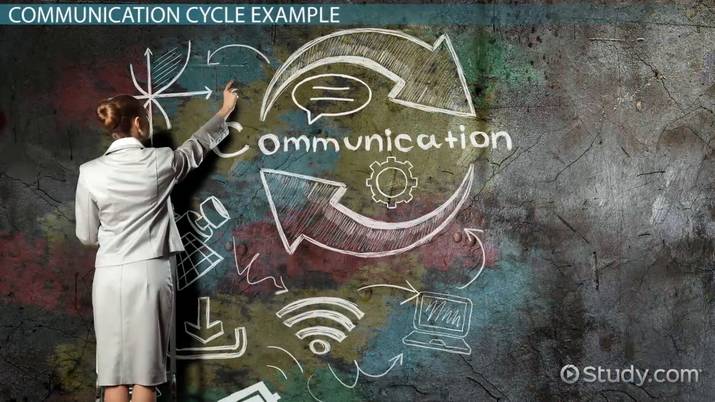What is the Communication Cycle?
The communication cycle is a process that involves the exchange of information between a sender and a receiver. It consists of five stages: encoding, message transmission, decoding, understanding, and feedback.
This cycle ensures effective communication by allowing for the clear and accurate transmission of ideas and information. Effective communication is crucial in any organization or relationship. By understanding the communication cycle, individuals can enhance their communication skills and ensure that messages are conveyed accurately and understood correctly.
The cycle begins with encoding, where the sender converts their thoughts or ideas into a message. The message is then transmitted through a chosen medium, such as speech or writing. The receiver then decodes the message, interpreting its meaning. Understanding occurs when the receiver comprehends the message correctly. Finally, feedback is provided by the receiver to confirm understanding and initiate further communication. Mastering the communication cycle can lead to stronger relationships, improved teamwork, and increased efficiency in any setting.

Credit: quizlet.com
Frequently Asked Questions For What Is The Communication Cycle?
What Is The Communication Cycle And Explain It?
The communication cycle is a process that involves the exchange of information between two or more people. It starts with a sender who develops a message and then encodes it for transmission. The message is then sent through a chosen channel, such as speaking, writing, or body language.
The receiver receives the message and decodes it to understand its meaning. To ensure effective communication, feedback is essential, which allows the sender to confirm whether the message has been understood correctly. This feedback may lead to further clarification or adjustments in the message.
The communication cycle is continuous and ongoing, allowing for the transmission of ideas, thoughts, and information between individuals or groups. It is vital for efficient communication in various settings, such as personal relationships, business, and professional environments.
What Are The 5 Stages Of The Communication Cycle?
The 5 stages of the communication cycle include encoding, transmitting, receiving, decoding, and feedback. In the encoding stage, information is formulated into a message. This message is then transmitted through a chosen channel, such as speaking or writing. The receiving stage involves the recipient obtaining the message.
Next, the message is decoded by the recipient, where they interpret the meaning and context of the message. Finally, feedback is given to the sender, which can be verbal or non-verbal and lets them know how well their message was understood.
These stages are essential for effective communication, as they ensure the accurate transmission and interpretation of information between sender and receiver.
What Are The 4 Stages Of The Communication Cycle?
The communication cycle consists of 4 stages: sender, message, receiver, and feedback. The sender initiates the communication by encoding the message into a form that can be understood by the receiver. The message is the information being communicated, which can be verbal, written, or nonverbal.
The receiver decodes the message and understands its meaning. After receiving the message, the receiver provides feedback to the sender, indicating understanding or seeking clarification. The feedback helps ensure effective communication and allows for adjustments if necessary. This cycle repeats for every communication exchange, whether it is a simple conversation or a complex business communication.
By following these stages, individuals can ensure that their message is accurately conveyed and understood by the intended audience.
What Is The Example Of Communication Cycle?
The communication cycle involves several stages, such as sender, message, channel, receiver, feedback, and noise. For example, a manager wants to convey important information to their team. They compose a concise message, select an appropriate channel (e. g. Email), and send it to their team members.
The team members receive the message, read and understand it. They may provide feedback to the manager by asking questions or expressing their thoughts. The communication cycle can be affected by noise, such as distractions or misunderstandings that hinder effective communication.
It is important to remember that communication is a continuous process, and feedback helps ensure the message is understood and any issues are addressed.
Conclusion
The communication cycle is an essential process for effective communication. It involves a series of steps that ensure the exchange of information between individuals or groups is successful. By understanding the components of the communication cycle, such as encoding, decoding, feedback, and noise, individuals can enhance their communication skills and improve their overall understanding of messages.
Through active listening, clear and concise verbal and non-verbal communication, and feedback, individuals can engage in meaningful and productive conversations. Effective communication is crucial in personal relationships, professional settings, and everyday life. It allows individuals to express their thoughts, ideas, and feelings, while also promoting understanding, collaboration, and empathy.
By applying the principles of the communication cycle, individuals can contribute to healthier and more fulfilling relationships, successful teamwork, and increased overall satisfaction in their interactions. Mastering the communication cycle is a lifelong process that requires practice, patience, and a genuine desire to connect with others.





